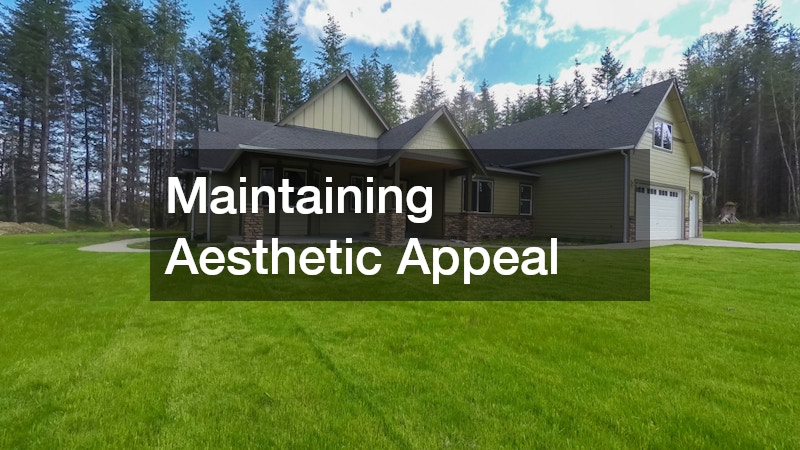How Residential Architects Are Designing Greener, Smarter Homes
In recent years, the demand for sustainable and intelligently designed housing has surged. Homeowners are increasingly prioritizing eco-friendly features and smart home technology. This article explores how residential architects are rising to the challenge, crafting homes that are both environmentally friendly and technologically advanced.
Key Sustainable Design Practices Used by Architects
Incorporating Renewable Energy Sources
Architects are increasingly designing homes with solar panels and other forms of renewable energy to reduce carbon footprints and energy costs. Photovoltaic systems are becoming a staple in new constructions, allowing homes to generate and utilize their own energy.
These systems not only contribute to sustainability but also offer homeowners significant savings on utility bills over time.
Additionally, architects are exploring geothermal energy as a sustainable heating and cooling solution. By tapping into the consistent temperatures underground, homes can maintain a comfortable indoor climate more efficiently. This reduces reliance on traditional HVAC systems, decreasing emissions and lowering operational costs.
Wind energy is also being considered where feasible, with small wind turbines being integrated into the home design. Although not viable for every location, in regions with sufficient wind, these turbines contribute to the home’s energy independence. Together with other renewable sources, wind energy is part of a comprehensive strategy to create self-sustaining homes.
Utilizing Eco-Friendly Materials
Construction materials like bamboo, cork, and reclaimed wood are being utilized for their minimal environmental impact and sustainability. Bamboo, known for its rapid growth rate, serves as an excellent renewable material, offering strength and versatility in construction. Similarly, cork is being used for insulation and flooring, prized for its durability and renewability.
Reclaimed wood provides a second life for materials that would otherwise end up in landfills, adding character and eco-friendliness to home construction. Architects value the aesthetic and historical significance reclaimed wood offers, making homes both visually appealing and environmentally sustainable. This embodies the principle of the circular economy by reducing waste and promoting recycling.
Furthermore, advancements in technology have facilitated the development of new building materials from recycled substances. Materials such as recycled metal roofing and recycled glass tiles are gaining popularity in eco-friendly home design. By choosing these materials, architects contribute to reducing industrial waste and the overall demand for virgin resources.
How Smart Home Technologies Are Integrated into Designs
The Role of Automation in Modern Homes
Smart devices and automated systems, such as climate control and lighting, are becoming standard in newly designed homes for increased efficiency and convenience. Automated climate control systems allow homeowners to maintain optimal indoor temperatures year-round while optimizing energy use. This not only enhances comfort but also significantly lowers energy consumption.
Similarly, automated lighting systems provide illumination only when needed, reducing energy waste from unnecessary lighting. Sensors connected to smart home networks ensure lights are turned off in vacated rooms or adjusted according to natural light availability. As technology evolves, these systems are becoming more intuitive, learning homeowner preferences and adapting accordingly.
In addition to comfort, these technological advancements contribute to significant cost savings. Homes equipped with automation systems can see substantial reductions in utility bills. This financial aspect makes smart technology appealing to both architects and homeowners, further encouraging its integration into modern residential design.
Enhancing Security and Connectivity
Advanced security systems and high-speed internet wiring ensure that homes are safe and interconnected, meeting modern lifestyle demands. Smart security systems offer features such as remote monitoring, motion detection, and intelligent alerts that keep homeowners informed about their property’s status in real time. This peace of mind is crucial, as security becomes a top priority for tech-savvy homeowners.
High-speed internet infrastructure within homes allows for seamless connectivity, supporting the integration of various smart devices and systems. As the number of connected devices in a home increases, reliable internet connectivity becomes indispensable. This infrastructure also supports telecommuting and remote learning, reflecting the evolving needs of today’s families.
Challenges Architects Face in Designing Green Homes
Balancing Innovation with Affordability
One of the main challenges is integrating advanced technologies and eco-friendly features without making the homes prohibitively expensive for average buyers. Architects must find cost-effective solutions that do not sacrifice quality or performance. Finding a balance between innovation and affordability requires creativity and an understanding of market trends.
New technologies often come with higher upfront costs, which can deter potential buyers concerned about budgeting. To combat this, architects and developers work together to offer financing options or incentives for green and smart homes. Educating buyers about the long-term savings and benefits of these features is also key to overcoming initial cost barriers.
Maintaining Aesthetic Appeal
Architects strive to create homes that are not only functional and sustainable but also aesthetically pleasing, which can be a complex balancing act. The challenge lies in integrating functional elements like solar panels or smart systems without detracting from the home’s visual appeal. Achieving a harmonious design that meets both practical and aesthetic needs requires careful planning and execution.
Materials chosen for sustainability can sometimes limit design possibilities, necessitating innovative solutions to create beautiful spaces. Architects often experiment with textures, colors, and layouts to ensure that eco-friendly homes remain attractive. This creativity can lead to stunning designs that redefine what sustainable architecture can look like.
The shift towards greener and smarter residential design is more than a trend—it’s a necessary evolution in the housing industry. As architects continue to innovate, they must navigate the complexities of sustainability, technology, and human-centric design to create homes that meet the needs of today’s environmentally conscious and tech-savvy homeowners. The future of residential architecture holds great promise, with the potential to transform the way we live and interact with our environment.

